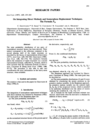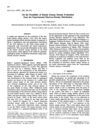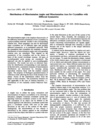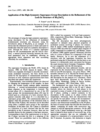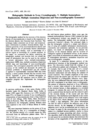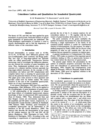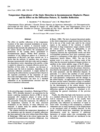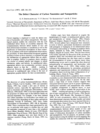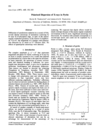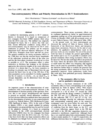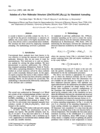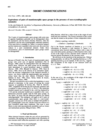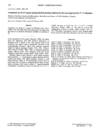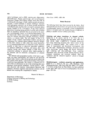issue contents
May 1997 issue

Cover illustration: A structural model of the decagonal Al-Pd-Mn quasicrystal, which consists of clusters represented by decagons and ten pentagons surrounding each decagon. This is obtained from a periodic structure in five-dimensional space by taking a three-dimensional section. Courtesy of A. Yamamoto.
research papers
For two isomorphous structures, the joint probability distribution function of ten pairs of structure factors is derived, from which improved estimates of triplet invariants may be obtained.
A simple new approach for the evaluation of the electronic kinetic energy density, G(r), from the multipole-fitted electron density is proposed. It allows a quantitativeand semi-quantitative determination of the G(r) values at the bond critical points of compounds with closed-shell and shared interactions, respectively.
Misorientation-angle and misorientation-axis distributions for randomly oriented crystallites are determined. Asymmetric domains for misorientation distributions are given. All pairs of crystal symmetries are considered.
The high-symmetry superspace-group formalism is applied to the refinement of the commensurate phase of Rb2ZnCl4. The main differences with respect to the low-symmetry description are analyzed.
The holographic method of X-ray crystallography now handles multiple isomorphous replacement and multiple anomalous dispersion data as well as non-crystallographic symmetry in a consistent way. Its power in synthetic and real problems is demonstrated.
Rotations for partial coincidences between icosahedral quasi-crystals have a rational representation in a 6D basis. Data for all such rotations with Σ < 50 are given together with derivations of coincidence site lattice and displacement shift complete lattice bases; the maintenance of coincidence sites on displacement incremental rotation is clarified.
The temperature dependence of the structural modification in incommensurate displacive phases can strongly influence the intensity of some main reflections causing various effects, as has been experimentally verified for thiourea.
The temperature variation of the structural distortion produces a temperature dependence of the satellite intensities that varies even for satellites of the same order and, in general, different from the one obtained close to the incommensurate transition temperature. A correlation obtained between the intensities of close first-order and high-order satellites provides a simple method for measuring the soliton density.
Circuit mapping is used to study the defect content of buckytubes and carbon nanoparticles. The topological analysis enables the connection with the well established defect theory of crystalline materials and interfaces.
Anisotropy of anomalous scattering is measured using synchrotron radiation.
Techniques for finding accurate bonding parameters are described for when electron diffraction intensities are perturbed significantly by multiple scattering.
Non-centrosymmetry effects and polarity determination in III–V semiconductors using CBED are discussed. It is shown that with carefully chosen diffraction conditions strong non-centrosymmetry effects may be observed in GaAs as well as in InP. The effects and their interpretation are discussed by means of the Bloch-wave theory and dynamical many-beam calculations.
A scheme to estimate errors in maximum-entropy-method (MEM) charge-density distributions via Monte Carlo simulations is presented. As a test example, the errors in the MEM electron-density distribution of metallic beryllium are examined based on calculations using both uniform and non-uniform prior distributions.
The combined anisotropy caused by magnetic interaction together with local crystal fields can result in excitation of additional Bragg reflections in X-ray resonant diffraction near the absorption edge.
A new molecular structure [SnClGe(SiC3H9)3]4, which seems to be unsolvable with conventional direct methods, has been solved by a real-space approach based on simulated annealing.
short communications
Crystallographic n-fold screw axes can be reduced to pure translational elements in the presence of parallel non-crystallographicrotational symmetry of the same fold or a multiple (in, where i is a positive integer). Under these circumstances, the 11 pairs of enantiomorphic space groups cannot be distinguished.
Comments on a paper by Manzhar [Acta Cryst. (1996), A52, 645–646] where the author gives the impression that there is no information available on packings in R3.
book reviews
Free 

Free 

books received
Free 

Free 



 journal menu
journal menu









